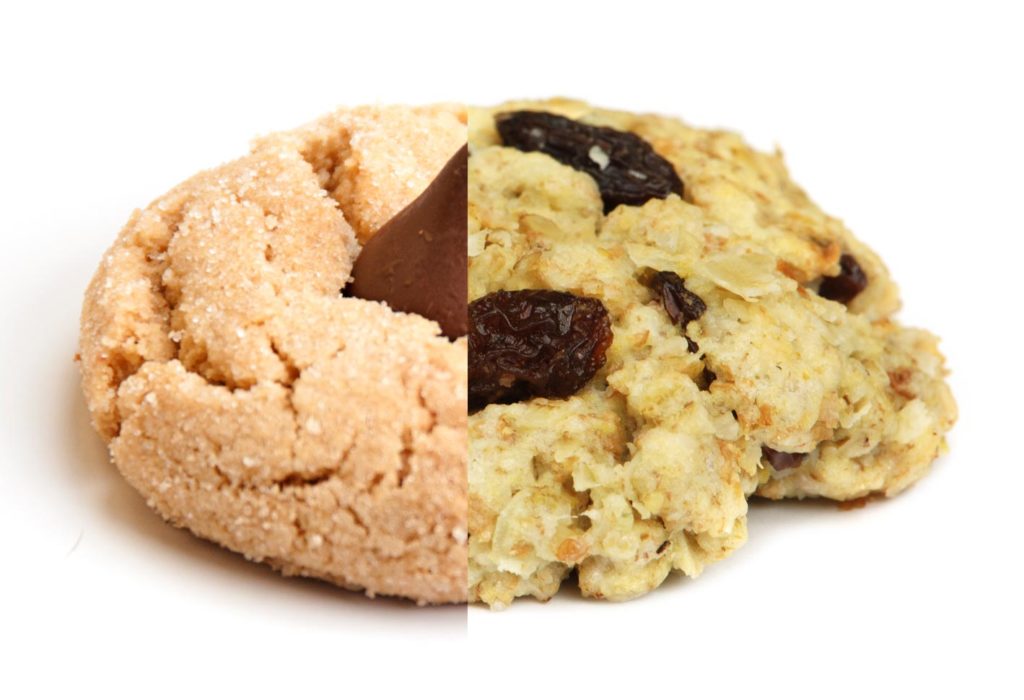
When thinking about our neighbors to the north, Canada, what springs most readily to mind? Take a moment to mull it over – we’ll wait. Is it the frigid winter temperatures? The potential for epic roadtrips to see the Northern Lights? The abundance of that sweet delicacy maple syrup? Or what about the national game, ice hockey, or its favorite player, Tim Horton and his later move into the world of coffee and donuts? Not a fan of hockey or sugary pastries (who are you?), maybe it’s their arguably envy-inducing single payer, universal healthcare that brings Canada to your mind. For Anglophiles, it could be the country’s continued fondness for Her Majesty, Queen of England. Or, maybe it comes down to the fact that Canadians are famously just such nice people, eh? But one small fact that’s unlikely to be on a general ‘Top Ten’ list (but which is of great interest to us) is the country’s record for food safety. Not only is it generally robust but, as Canadians would have you know, it is tout as being ‘one of the strongest in the world.’(1) And it’s about to get even stronger. How? Read on to learn more…
In an article published recently in Food Safety Magazine, an online portal for food safety professionals, the president of the Canadian Food Inspection Agency (CFIA), Paul Glover, writes that the risks and challenges of the increasingly internationalized food market sector is prompting Canada’s regulatory body, the CFIA, to adopt a ‘course of continuous improvement to modernize every strategic area of our organization, from regulations and risk management to inspections, digital tools, and global leadership.’(2) And it is this continued drive for improvement that piqued our initial curiosity: given that they have created a system that, by reputation, already leads the world, how can the Canadians create meaningful improvement? We decided to dive deeper…
…the SFCR is a consolidation and strengthening of consumer protection systems via a focus on both food contamination prevention and on the more rapid removal of unsafe foods from the market.
June of last year saw the finalization of the revised ‘Safe Food for Canadians Regulations’ (SFCR) that was implemented to replace with a single robust framework the sprawling 14 other sets of regulatory oversight of the food manufacturing industry. Written in partnership with experts, international trading partners, supply chain representatives, consultants for food-based businesses, and everyday consumers, the SFCR is a consolidation and strengthening of consumer protection systems via a focus on both food contamination prevention and on the more rapid removal of unsafe foods from the market. Coming online last month, the requirements are set to be implemented according to a multi-phase timeline, with some effective immediately and others to be introduced within 12 to 30 months depending on the business size, activity, and type of food in question.
With numbers hovering around 37,000,000, Canada’s national population is considerably smaller than that of the U.S. at almost 328,250,000. However, in terms of food safety recalls, the statistics for both countries are strikingly similar. In the same way that domestic recalls are recorded by the United States Food and Drug Administration (FDA), Canadian recalls are logged by the CFIA. And according to that data, in January of 2019 both agencies reported 12 food-safety based recalls, 5 (for the U.S.) and 6 (for Canada) of which were for undeclared allergens, with others recalled for bacterial contamination. Interestingly, while the public conception of food allergens largely focuses on what we regard as the traditional villains – peanuts and soy – egg, wheat, and milk are by far the more common. And this might be because of the types of foods in which they can be present. According to FDA data, undeclared allergens are most frequently found in one of five different food types: snack foods, bakery products, dairy products, salad dressings and gravies, and candy, with food that is even labeled ‘vegan’ sometimes containing more than trace elements.(3)

But how does this happen? Steven Gendel, a food allergen coordinator with the FDA, points to an alarmingly simple explanation: mislabeling. Writing for the organization, Gendel notes that the same advances in technology that enable, for instance, the printing of labeling information directly onto packaging ‘can save costs but also create new opportunities for errors.’(4) And when the packaging of products within a given line reflects a strong corporate branding, it can be easy for similar items to end up displaying the wrong nutritional breakdown and ingredient information.
…defining cross-contact as ‘the unintentional incorporation of a food allergen into a food’ and cross-contamination as relating directly to defilement due to insanitary conditions or practices.
But apart from the sometimes understandable problem of mislabeling, there are two other important ways in which allergens can come to be present in seemingly innocuous products: cross-contamination and cross-contact, and we were surprised to learn that the FDA now actively differentiates between the two. Before the passing of the Food Safety Modernization Act (FSMA) of 2011, in regulatory terms cross-contamination was by and large synonymous with cross-contact. In essence both terms indicated the presence of a substance – usually a contaminant – that could pose a hazard to health and therefore trigger a safety recall. However, since the publication in 2013 of the Preventative Control rule, organizations charged with consumer safety in the food arena, such as the FDA, have created a distinction between the two, defining cross-contact as ‘the unintentional incorporation of a food allergen into a food’ and cross-contamination as relating directly to defilement due to insanitary conditions or practices.(5) So, for instance, cross-contact would result from the shared use of equipment between products where one contains an allergen. Suppose a manufacturer is making two types of cookies: one is chocolate-peanut butter and the other is that perennial favorite oatmeal-raisin. If the stirrers used to beat a batch of chocolate-peanut butter batter (say that five times fast!) were not completely sanitized before being used with the oatmeal-raison batter cross-contact will occur. This is deemed an unintentional incorporation through accidental transfer.
Cross-contamination, on the other hand, seems more egregious, stemming as it does from unsafe and unsanitary practices.
Whether from a basic lack of understanding or training or from employees who fail to maintain correct personal hygiene, cross-contamination can introduce a whole host of dangers into our favorite foods. Going back to the FDA and CFIA listings of food recalls, we see that many cases cite potential contamination by pathogens such as salmonella or listeria with even the occasional case of possible lead inclusion.
So is there a solution to this problem? Given that the realities of globalized food trade necessarily assume international import/exporting relations, is there a way to ensure that products are safe from both cross-contact and cross-contamination issues?
Of course there is. But it is both elegantly simple to adopt and infuriatingly difficult to police: manufacturer responsibility.
However, in myriad other food-related market sectors, HACCP is recommended but not required.
As we have commented in many previous articles, when it comes to food safety it is incumbent upon manufacturers to self-safeguard, and this means so much more than merely paying lip service to the concept of contamination control. It means the deliberate and thoughtful cultivation of a corporate culture in which safety protocols are not only devised but are also willingly adhered to in every part of the manufacturing process. And this is where we are a little concerned at Canada’s stance. Even with this touted ‘best in world’ safety standard, Canada does not yet mandate the creation and adoption of Hazard Analysis and Critical Control Points (HACCP) protocols in all food processing arenas. Under current guidelines HACCP is mandatory only in federally-regulated meat and poultry establishments’ where the CFIA ‘uses the Compliance Verification System to verify an establishment’s compliance to their HACCP system.’(6) However, in myriad other food-related market sectors, HACCP is recommended but not required. And those sectors include establishments that manufacture or process egg, dairy, or honey – all of which are common allergens. Perhaps the SFCR addresses this apparent oversight later in its multi-phase rollout – we can only hope so.
However the Canadians being who they are – that is, stereotypically considerate ‘to a fault’ – it may well be that despite a lack of an explicit mandate, food manufacturers to our north will strive to ensure that their food safety system’s crown as ‘one of the strongest in the world’ remains firmly in place. And it is the responsibility of any player within the food industry – Canadian, domestic, or international – to institute a tightly constructed and strictly policed system of robust measures to ensure consumer safety. If that player wishes to that wishes to retain its consumers, of course. In terms of our own domestic market, the FDA encourages improvements via a suite of measures including ‘improved industry awareness and simple changes in the way packages, labels and ingredients are handled and tracked within production facilities’ and a reading of the top-level summery of Canada’s new SFCR certainly hints at the importance of hazard analysis and mitigation.(7) In addressing the need for consistent standards, the CFIA highlights the significance of knowledge of supply chains including those of vendors and suppliers, and demonstrating that in all aspects of the manufacturing process – from preparation to production, storage to packaging and distribution – the product is created following strict adherence to Current Good Manufacturing Processes (cGMPs), HACCP, and the slew of other regulatory guidelines.
After all, with every bite, your customers gamble their lives on you taking corporate responsibility for your own products. And excellence in food safety in manufacture – whether in terms of the prevention of allergen cross-contact or pathogen cross-contamination – hardly seems too much to expect, eh?
Did you know about the new rollout of Canada’s SFCR regulations? Does it impact your business? Would you like to see any updates to our own regulatory guidelines? We’d love to know your thoughts!
Canada’s New Safe Food for Canadian Regulations (SFCR)? – An Update
References:
- https://www.foodsafetymagazine.com/enewsletter/the-safe-food-for-canadians-regulations-advancing-food-safety/
- ibid
- https://www.fda.gov/ForConsumers/ConsumerUpdates/ucm416577.htm
- ibid
- https://www.qualityassurancemag.com/article/cross-contact-vs-cross-contamination/
- http://www.inspection.gc.ca/about-the-cfia/newsroom/food-safety-system/haccp/eng/1346306502207/1346306685922
- https://www.fda.gov/ForConsumers/ConsumerUpdates/ucm416577.htm

Pingback: Canada’s New Safe Food for Canadian Regulations (SFCR)? – An Update - Food Contact Surfaces